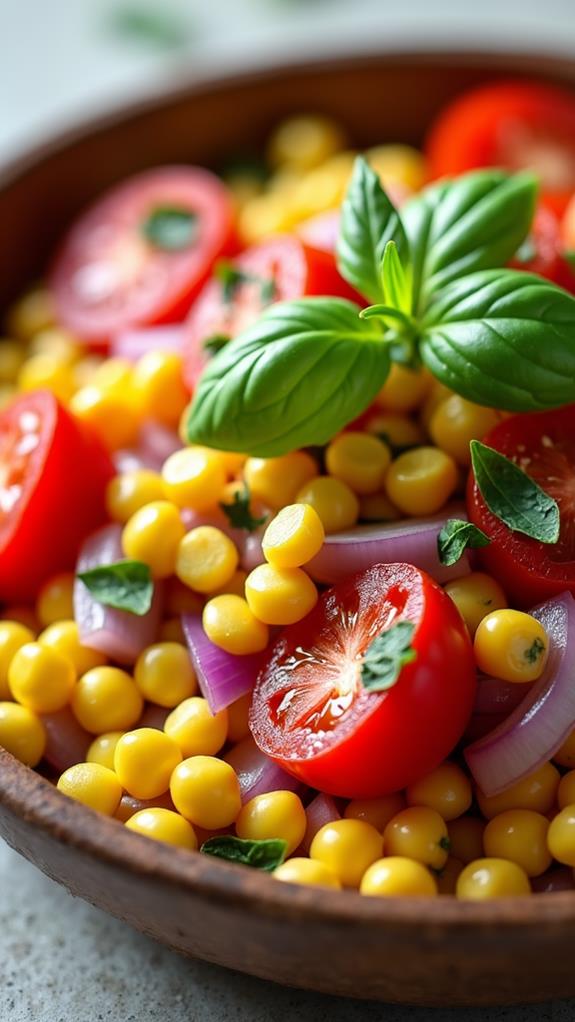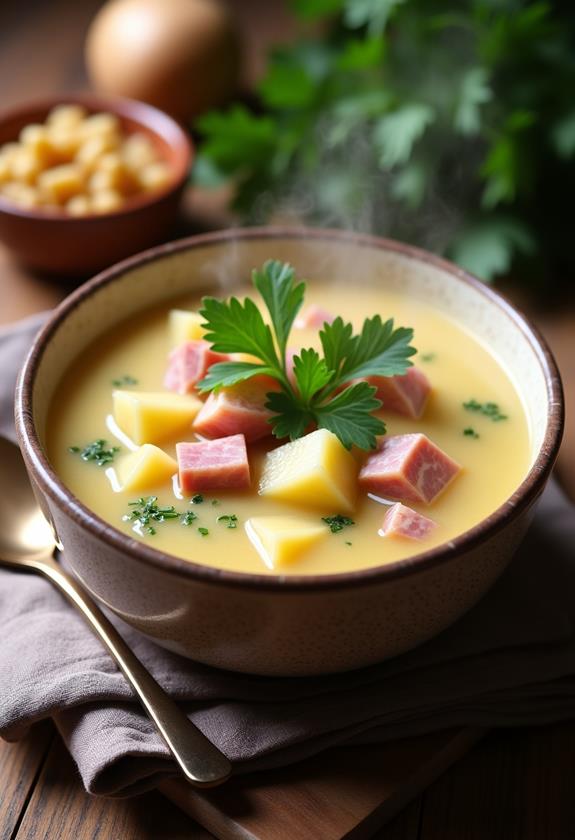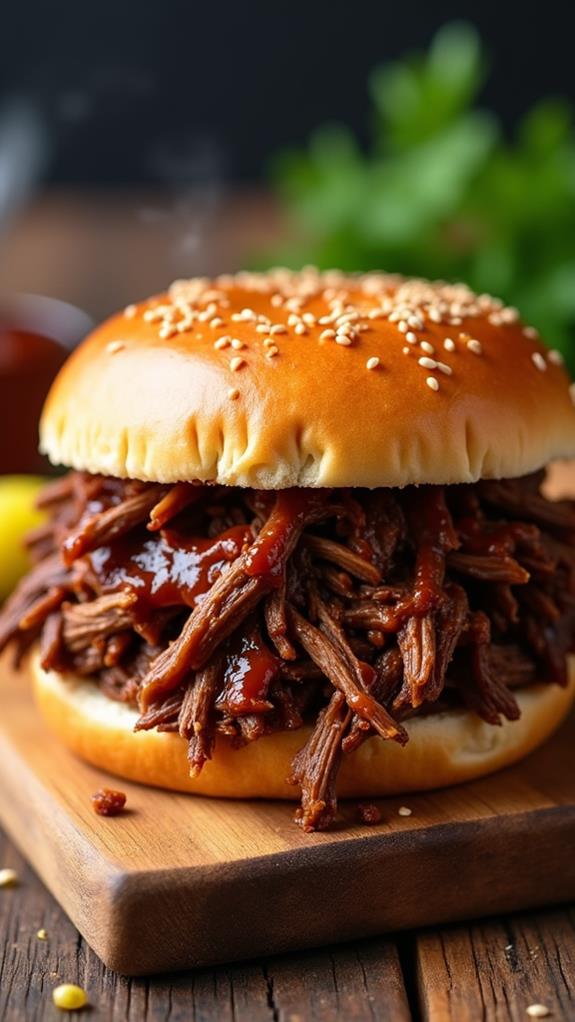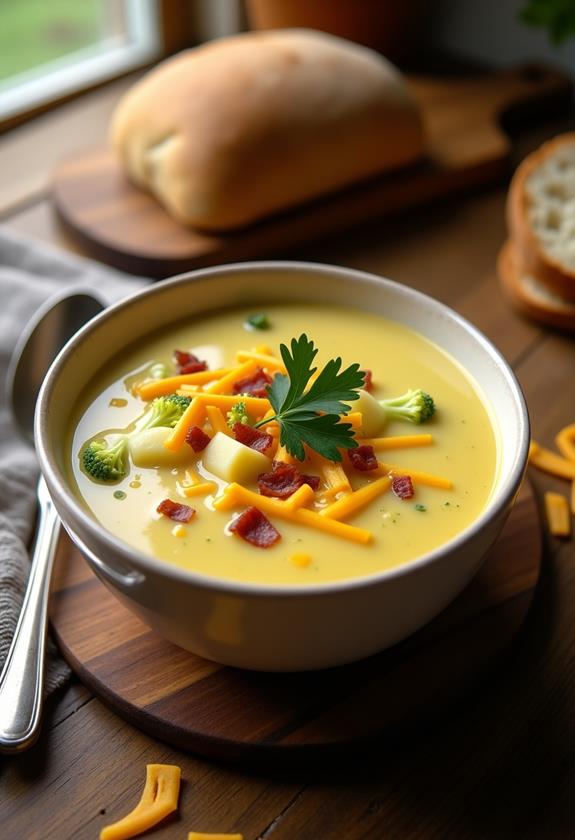Classic Beef Stew Recipe
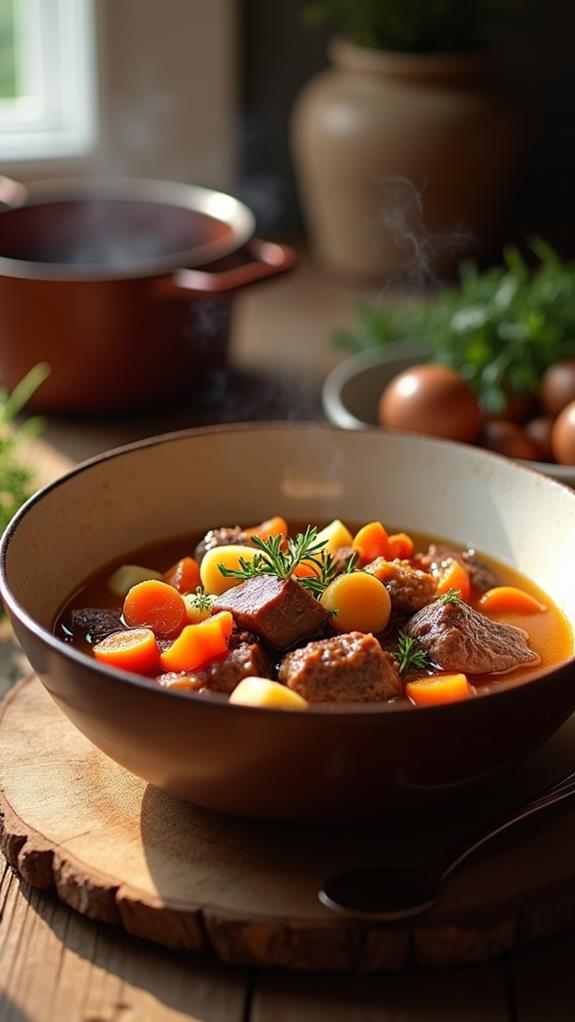
When the weather turns chilly and you’re craving something warm and satisfying, nothing beats a hearty bowl of classic beef stew. This comfort food favorite brings together tender chunks of beef, wholesome vegetables, and rich, savory broth in perfect harmony.
I’ve perfected this beef stew recipe over the years, and it never fails to fill my kitchen with incredible aromas and my family with pure satisfaction. Follow along as I share my tried-and-true method for creating the ultimate beef stew that will become your go-to recipe for cozy nights and family gatherings.
What is “Classic Beef Stew”?
Classic beef stew is a traditional one-pot meal that combines chunks of beef with vegetables like carrots, potatoes, and onions in a rich, flavorful broth. This slow-cooked dish allows the beef to become fork-tender while the vegetables absorb all the delicious flavors.
The magic happens through a process called braising, where the beef is first seared to develop a beautiful crust, then slowly simmered in liquid until it becomes incredibly tender. This cooking method transforms tough cuts of meat into melt-in-your-mouth perfection.
Ingredients List for Classic Beef Stew
- 2 pounds beef chuck roast, cut into 2-inch cubes
- 3 tablespoons all-purpose flour
- 2 tablespoons vegetable oil
- 1 large onion, diced
- 3 cloves garlic, minced
- 3 tablespoons tomato paste
- 4 cups beef broth
- 1 cup red wine (optional)
- 2 bay leaves
- 1 teaspoon dried thyme
- 1 teaspoon salt
- ½ teaspoon black pepper
- 4 medium carrots, cut into 1-inch pieces
- 3 medium potatoes, cubed
- 2 celery stalks, chopped
- 1 cup frozen peas
- 2 tablespoons fresh parsley, chopped
How to Cook Classic Beef Stew: A Step-by-Step Guide
Creating the perfect beef stew requires patience and attention to detail. Here’s my comprehensive guide to ensure your stew turns out beautifully every time:
1. Prepare the Beef:
- Pat the beef cubes completely dry with paper towels to ensure proper browning.
- Season the beef generously with salt and pepper on all sides.
- Toss the beef cubes with flour in a large bowl, making sure each piece is evenly coated.
- This flour coating will help create a beautiful crust and thicken the stew later.
2. Sear the Beef:
- Heat vegetable oil in a large Dutch oven or heavy-bottomed pot over medium-high heat.
- Working in batches to avoid overcrowding, brown the beef cubes on all sides.
- Each batch should take about 6-8 minutes total to develop a deep, golden-brown crust.
- Transfer the browned beef to a plate and set aside.
3. Build the Flavor Base:
- In the same pot, add the diced onions to the remaining oil and beef drippings.
- Cook for 3-4 minutes until the onions begin to soften and become translucent.
- Add the minced garlic and cook for another 30 seconds until fragrant.
- Stir in the tomato paste and cook for 1-2 minutes to develop its flavor.
4. Deglaze and Add Liquids:
- Pour in the red wine (if using) and scrape up any browned bits from the bottom of the pot.
- Let the wine simmer for 2-3 minutes to cook off the alcohol.
- Add the beef broth, bay leaves, thyme, and return the browned beef to the pot.
- Bring the mixture to a boil, then reduce heat to low and cover.
5. Slow Simmer:
- Let the stew simmer gently for 1.5 to 2 hours, stirring occasionally.
- The beef should be getting tender but not quite falling apart yet.
- If the liquid level gets too low, add more beef broth as needed.
6. Add the Vegetables:
- Add the carrots, potatoes, and celery to the pot.
- Continue simmering for another 30-45 minutes until the vegetables are tender.
- Test the beef with a fork – it should easily break apart when fully cooked.
7. Final Touches:
- Stir in the frozen peas during the last 5 minutes of cooking.
- Remove the bay leaves and taste for seasoning, adjusting salt and pepper as needed.
- Garnish with fresh chopped parsley before serving.
Substitutions and Variations
I love how versatile beef stew can be! Here are some substitutions and variations I’ve tried successfully:
- Beef Cut: While chuck roast is ideal, you can use beef short ribs or round roast for different textures and flavors.
- Wine Alternative: Replace red wine with additional beef broth or use dark beer for a different depth of flavor.
- Vegetable Swaps: Try parsnips instead of carrots, sweet potatoes instead of regular potatoes, or add mushrooms for extra umami.
- Herb Variations: Fresh rosemary or oregano can replace thyme for different flavor profiles.
- Gluten-Free Option: Use cornstarch or arrowroot powder instead of flour for coating and thickening.
- Slow Cooker Method: After browning the beef and sautéing the aromatics, transfer everything to a slow cooker and cook on low for 6-8 hours.
Common Mistakes to Avoid
Through years of making beef stew, I’ve learned to avoid these common pitfalls:
- Skipping the Searing Step: Properly browning the beef creates essential flavor through the Maillard reaction. Don’t rush this step!
- Overcrowding the Pan: Sear beef in batches to ensure proper browning rather than steaming.
- Using the Wrong Cut: Lean cuts like sirloin will become tough and dry. Stick with well-marbled cuts like chuck roast.
- Cooking Too Fast: High heat will toughen the meat. Low and slow is the key to tender beef.
- Adding Vegetables Too Early: Hardy vegetables like potatoes and carrots should be added during the last hour to prevent them from becoming mushy.
- Not Tasting for Seasoning: Always taste and adjust seasoning at the end of cooking.
How to Serve Classic Beef Stew
I love serving beef stew as a complete meal that satisfies both body and soul. The stew pairs beautifully with crusty sourdough bread or warm dinner rolls for dipping into the rich broth. A simple side salad with crisp greens provides a nice contrast to the hearty stew.
For special occasions, I serve the stew over buttered egg noodles or creamy mashed potatoes. This creates an even more filling and comforting meal that’s perfect for cold winter evenings or Sunday family dinners.
Presentation Ideas for Classic Beef Stew
While beef stew is inherently rustic, there are several ways I like to elevate its presentation:
- Rustic Bowls: Serve in deep, ceramic bowls that retain heat and create a cozy, homestyle appearance.
- Fresh Herb Garnish: A sprinkle of fresh parsley, thyme, or chives adds color and freshness to each bowl.
- Bread Accompaniment: Serve with a basket of warm, crusty bread or homemade biscuits on the side.
- Individual Crocks: For entertaining, serve in individual oven-safe crocks and garnish with a sprig of fresh herbs.
Classic Beef Stew Recipe Tips
Here are my top tips for achieving the best results every time:
- Choose Quality Beef: Invest in good-quality chuck roast from a trusted butcher for the best flavor and texture.
- Temperature Control: Keep the simmer gentle – you should see just a few bubbles breaking the surface.
- Make It Ahead: Beef stew actually tastes better the next day as the flavors meld together.
- Don’t Skip the Wine: Even if you don’t drink wine, cooking with it adds incredible depth to the stew.
- Thickness Adjustment: If your stew is too thin, mix 2 tablespoons of flour with cold water to create a slurry and stir it in.
- Fresh vs. Dried Herbs: While dried herbs work well for long cooking, finish with fresh herbs for brightness.
How to Store Classic Beef Stew
Allow the beef stew to cool completely before storing (within 2 hours of cooking). Transfer to airtight containers and refrigerate for up to 4 days. The stew can also be frozen for up to 3 months in freezer-safe containers.
When reheating, do so gently on the stovetop over low heat, stirring occasionally. You may need to add a little beef broth if the stew has thickened too much during storage. Frozen stew should be thawed overnight in the refrigerator before reheating.
Frequently Asked Questions (FAQs)
Q: Can I make beef stew in a slow cooker?
A: Absolutely! After browning the beef and sautéing the aromatics on the stovetop, transfer everything to a slow cooker. Cook on low for 6-8 hours or high for 3-4 hours, adding vegetables during the last 2 hours.
Q: Why is my beef tough after cooking for hours?
A: This usually happens when the cooking temperature is too high. Beef needs gentle, low heat to break down the tough connective tissues properly.
Q: Can I freeze beef stew?
A: Yes, beef stew freezes beautifully for up to 3 months. However, potatoes may become slightly grainy after freezing, so consider leaving them out if you plan to freeze the stew.
Q: What’s the best cut of beef for stew?
A: Chuck roast is ideal because it has good marbling and connective tissue that breaks down during slow cooking, creating tender, flavorful meat.
Q: How can I thicken my stew if it’s too watery?
A: Mix 2 tablespoons of flour or cornstarch with cold water to create a slurry, then stir it into the simmering stew. Cook for a few more minutes until thickened.
Q: Should I peel my potatoes and carrots?
A: It’s a matter of preference. I often leave the skins on for added nutrition and rustic appearance, but make sure to scrub them well first.
Conclusion
Classic beef stew represents everything I love about comfort food – it’s hearty, satisfying, and brings people together around the dinner table. This recipe has been my go-to for years because it consistently delivers tender beef, perfectly cooked vegetables, and a rich, flavorful broth that warms you from the inside out.
The beauty of beef stew lies in its simplicity and adaptability. While the basic technique remains the same, you can easily customize it with your favorite vegetables or seasonings. Don’t be afraid to make it your own!
Whether you’re cooking for a weeknight family dinner or preparing a meal for friends, this beef stew recipe will never disappoint. Take your time with each step, especially the browning and simmering phases, and you’ll be rewarded with a dish that tastes like it came from a professional kitchen. Happy cooking!

